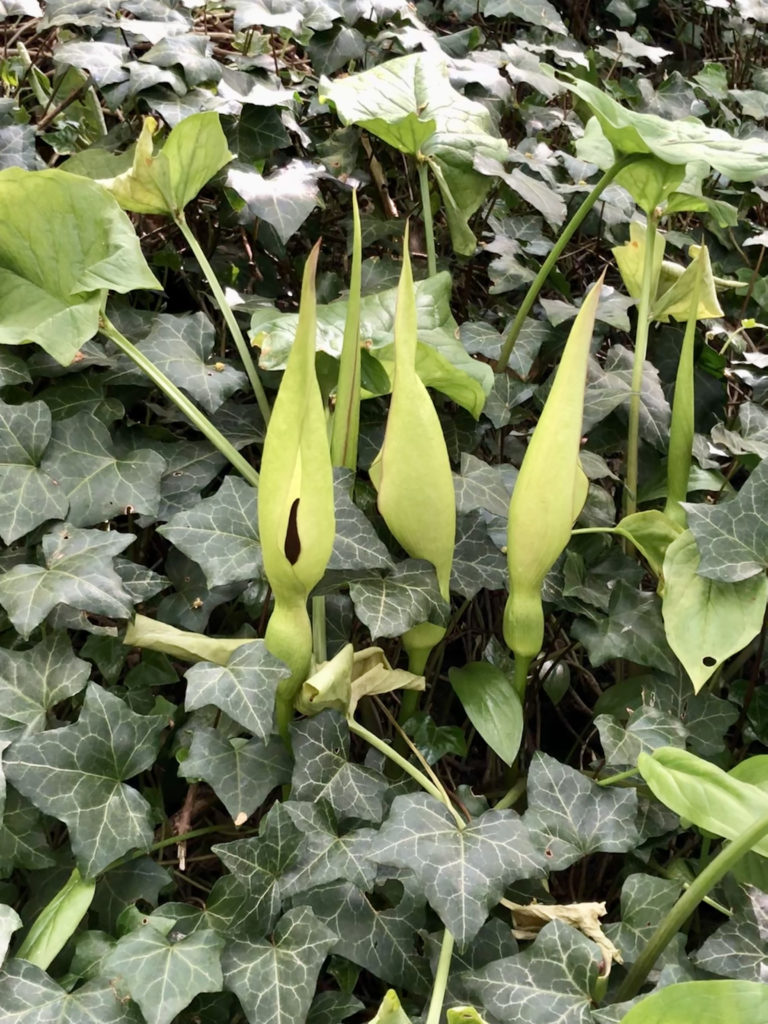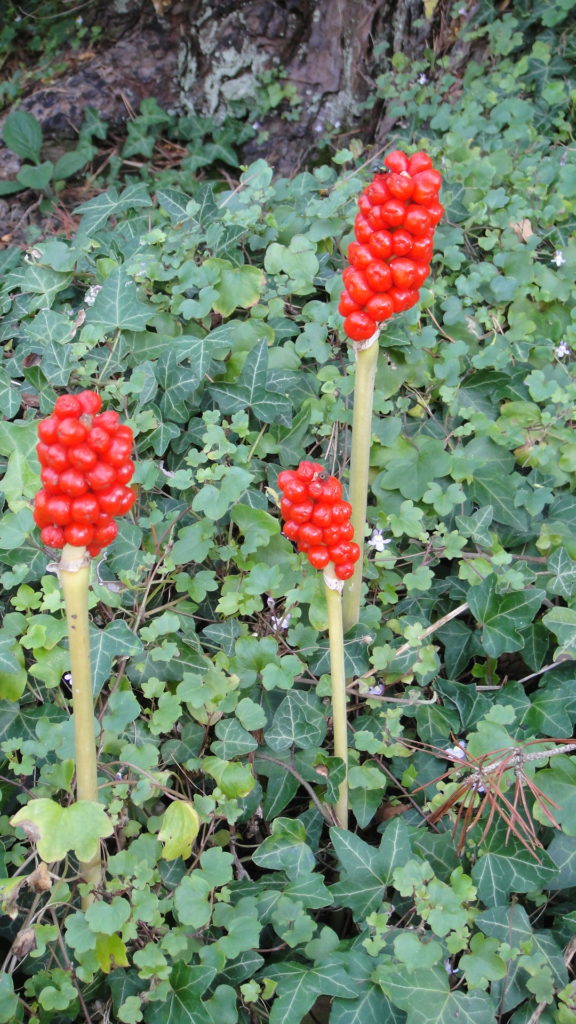Arum maculatum – Lords and ladies – was collected for the Darwin Tree of Life project by Dr Maarten Christenhusz (Royal Botanic Garden Kew) on the 27th April 2021, on Petersham common, a conserved woodland in Greater London.
Arum maculatum DToL 9156, photographed by Dr Maarten Christenhusz
Lords and ladies has an underground tuber, spathe-shrouded spikes of flowers and vivid eye-catching berries, all with high oxalate contents: without careful preparation all parts are poisonous to humans, with no known antidote.
Arum maculatum Greys Court DSC09053, photographed by Dr Maarten Christenhusz
However, the berries contain spiky crystals that are painful to chew and swallow, so nobody foolish enough to eat one berry is likely to try eating a second (birds are not put off by this, and are the main disperser of the seeds), while the scent of the flowers is not conducive to bouquets – in early evening they heat up, releasing a fetid smell that entices pollinating flies. These overnight guests are trapped in the floral chamber, dining on sticky secretions from the female flowers before being showered with pollen and released the next day, with timings controlled by the plant’s biological clock.
Part of the Darwin Tree of Life Arum maculatum collection was posted to us in Edinburgh for an identity check using DNA sequence data. We also received a duplicate of the herbarium voucher specimen from Kew, a dried pressed plant that is conserved so that anyone can recheck its identification. There are about 3 million plant and fungal specimens stored in the Herbarium at the Royal Botanic Garden Edinburgh, with an ongoing databasing and digitization programme that is making high quality images of these, such as the image above, openly available.



